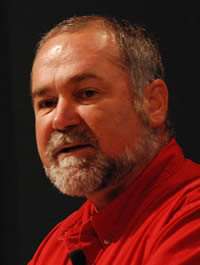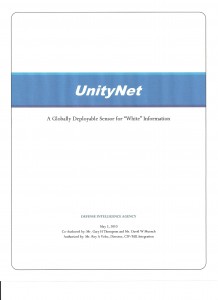ROBERT D. STEELE is a retired Marine Corps infantry and intelligence officer and also qualified as an S-1/Adjutant, with service at all levels from platoon to Service Headquarters. After four years active duty (the balance in the Individual Ready Reserve) and a decade in the clandestine service of the Central Intelligence Agency (including three tours overseas focused on terrorist and extremist targets), he resigned from the CIA to accept a Marine Corps invitation to be the senior civilian responsible for creating the Marine Corps Intelligence Center (today a Command) and served as the study directory for the flagship study, Overview of Planning and Programming Factors for Expeditionary Operations in the Third World. He resigned from the Marine Corps civil service in 1993 to lead the modern Open Source Intelligence (OSINT) revolution, and is the author of the DIA, NATO, and SOF OSINT Handbooks, as well as personally responsible for training 7,500 officers from 66 countries. His latest book, INTELLIGENCE for EARTH: Clarity, Diversity, Integrity, & Sustainability, outlines a course of action for creating public intelligence in the public interest across all organizations, beginning with the United Nations. Mr. Steele founded OSS.Net, Inc. and Earth Intelligence Network, the latter a 501c3 public charity, and is the foremost proponent for a Swedish concept enhancing Multinational, Multiagency, Multidisciplinary, and Multidomain Information-Sharing and Sense-Making (M4IS2). Mr. Steele holds graduate degrees in international relations and public administration from Lehigh University and the University of Oklahoma. He has also earned a certificate in intelligence policy from Harvard University and a diploma in defense studies from the Naval War College.
SSI Publications by Mr. Robert D. Steele
EDIT: None of these are “handbooks” in the classical sense of the word, but all are strategic guides that set the standard for holistic approaches to human intelligence, information operations, and analytic intelligence.
- Added June 03, 2010
- Type: Monograph
- Human Intelligence: All Humans, All Minds, All the Time.
- Authored by Mr. Robert D. Steele.
- The author explores the centrality of Human Intelligence in meeting the needs of the U.S. Army, as well as the Department of Defense, and the whole of government, for relevant information and tailored intelligence essential to creating a national security strategy; for defining whole of government policies that work in harmony; for acquisition of the right capabilities at the right price in time to be useful; and for operations, both local and global.
- Added February 01, 2006
- Type: Monograph
- Information Operations: Putting the “I” Back Into DIME.
- Authored by Mr. Robert D. Steele.
- In the Age of Information, the primary source of National Power is information that has been converted into actionable intelligence or usable knowledge. Information Operations is the critical ingredient in early warning, peacekeeping, stabilization & reconstruction, and homeland defense.
- Added February 01, 2002
- Type: Monograph
- The New Craft of Intelligence: Achieving Asymmetric Advantage in the Face of Nontraditional Threats.
- Authored by Mr. Robert D. Steele.
- This monograph is the third in the Strategic Studies Institute's “Studies in Asymmetry” Series. In it, the author examines two paradigm shifts–one in relation to the threat and a second in relation to intelligence methods– while offering a new model for threat analysis and a new model for intelligence operations in support to policy, acquisition, and command engaged in nontraditional asymmetric
- LINKS REPAIRED 10 July 2010







